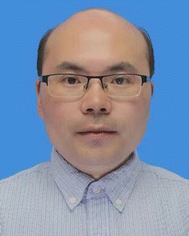Materials Horizons Emerging Investigator Series: Professor Yi Zhang, Zhejiang Normal University, China
Yi Zhang is a professor at the Institute for Science and Applications of Molecular Ferroelectrics & Key Laboratory of the Ministry of Education for Advanced Catalysis Materials of Zhejiang Normal University. He received his ME degree and PhD from Southeast University in 2005 and 2010, respectively. After joining the School of Chemistry and Chemical Engineering of Southeast University in 2012, he was awarded the Southeast University Distinguished Young Professor Fellowship and was supported by the National Excellent Youth Fund in 2015.
His research and teaching focus on the areas of molecular based dielectric, ferroelectric, multiferroic and X-ray detection. He has achieved considerable success in these fields and published more than 80 papers as first author/corresponding author, and many representative works have been published in Science, Nat. Mater., Matter, J. Am. Chem. Soc., Angew. Chem. Int. Ed., Adv. Mater., Nat. Commun., and Mater. Horiz.
Read Yi Zhang’s Emerging Investigator Series article ‘Achieving circularly polarized luminescence and large piezoelectric response in hybrid rare-earth double perovskite by a chirality induction strategy’ ( https://doi.org/10.1039/D2MH00698G ) and read more about him in the interview below:
MH: Your recent Materials Horizons Communication reports the synthesis and design of a pair of enantiomeric 3D hybrid rare-earth double perovskites by introducing chirality into them. How has your research evolved from your first article to this most recent article and where do you see your research going in future?
YZ: Our first article was published in 2012 (https://doi.org/10.1021/ja3047427). In that paper, we presented a mononuclear metal–organic compound with ferroelectricity induced by twisting motions. Since that work, we have been working on developing molecule-based ferroelectrics with novel properties, such as luminescent ferroelectrics, multiferroics, and ferroelectric semiconductors. In 2017, we explored an organic–inorganic hybrid perovskite ferroelectric with piezoelectricity comparable to BaTiO3.1 In that work, we found that the coupling of multiaxial ferroelectricity with ferroelasticity plays an important role in obtaining a large piezoelectric response. Nevertheless, a strategy for effectively achieving the aforementioned coupling is still required. Until recently, by analyzing 88 species of ferroelectric phase transitions, we discovered ferroelectrics featuring chiral-to-chiral phase transitions possess the aforementioned coupling with high probability. Moreover, chiral materials possess potential circularly polarized luminescence. Considering that our recently discovered rare-earth double perovskites feature outstanding photoluminescence properties,2 we developed a strategy to kill two birds with one stone, i.e., obtaining a large piezoelectric response and circularly polarized luminescence by introducing chirality into rare-earth double perovskites. Encouraged by this work, we have focused on exploring the structure–properties relationship of molecular ferroelectrics to aid the directional design of molecular ferroelectrics for specialised applications.
MH: What aspect of your work are you most excited about at the moment?
YZ: What I am most excited about is the discovery of an effective strategy for building molecular ferroelectrics with effective piezoelectric responses. Recently, the development of molecule-based piezoelectric materials has achieved notable success. Although recent studies have pointed out that the coupling of multiaxial ferroelectricity with ferroelasticity plays an important role in obtaining large piezoelectric responses, accurate and effective design strategies for obtaining this coupling are lacking. As a consequence, this work will inspire researchers to investigate the role of chirality in exploring functional materials.
MH: In your opinion, what are the most important questions to be asked/answered in this field of research?
YZ: A most important and urgent question is how to achieve the practical application of molecular ferroelectrics. It is well known that inorganic ceramic ferroelectrics occupy the mainstream of practical applications so far, despite molecular ferroelectrics that are lightweight, mechanically flexible and available through solution-processing. This is because molecular ferroelectrics are still unable to replace their inorganic counterparts due to relatively poor properties and stability.
MH: What do you find most challenging about your research?
YZ: Molecular ferroelectrics involves both chemistry and physics, so a lot of theoretical knowledge is needed. Moreover, knowing how exactly to use chemical methods to achieve the desired performance is a challenge.
MH: In which upcoming conferences or events may our readers meet you?
YZ: I will probably attend the 9th Chinese Coordination Chemistry Conference from August 21–25, 2022 in Zhengzhou, China. I look forward to meeting colleagues working on coordination chemistry and rare-earth multifunctional materials.
MH: How do you spend your spare time?
YZ: I take walks with family and friends.
MH: Can you share one piece of career-related advice or wisdom with other early career scientists?
YZ: Stay humble, keep learning and innovating, and get out of your comfort zone.
References
- Y.-M. You, W.-Q. Liao, D. Zhao, H.-Y. Ye, Y. Zhang, Q. Zhou, X. Niu, J. Wang, P. F. Li, D.-W. Fu, Z. Wang, S. Gao, K. Yang, J.-M. Liu, J. Li, Y. Yan and R.-G. Xiong, Science, 2017, 357, 306–309 CrossRef CAS PubMed.
- C. Shi, L. Ye, Z.-X. Gong, J.-J. Ma, Q.-W. Wang, J.-Y. Jiang, M.-M. Hua, C.-F. Wang, H. Yu, Y. Zhang and H.-Y. Ye, J. Am. Chem. Soc., 2020, 142, 545–551 CrossRef CAS PubMed.
| This journal is © The Royal Society of Chemistry 2022 |

